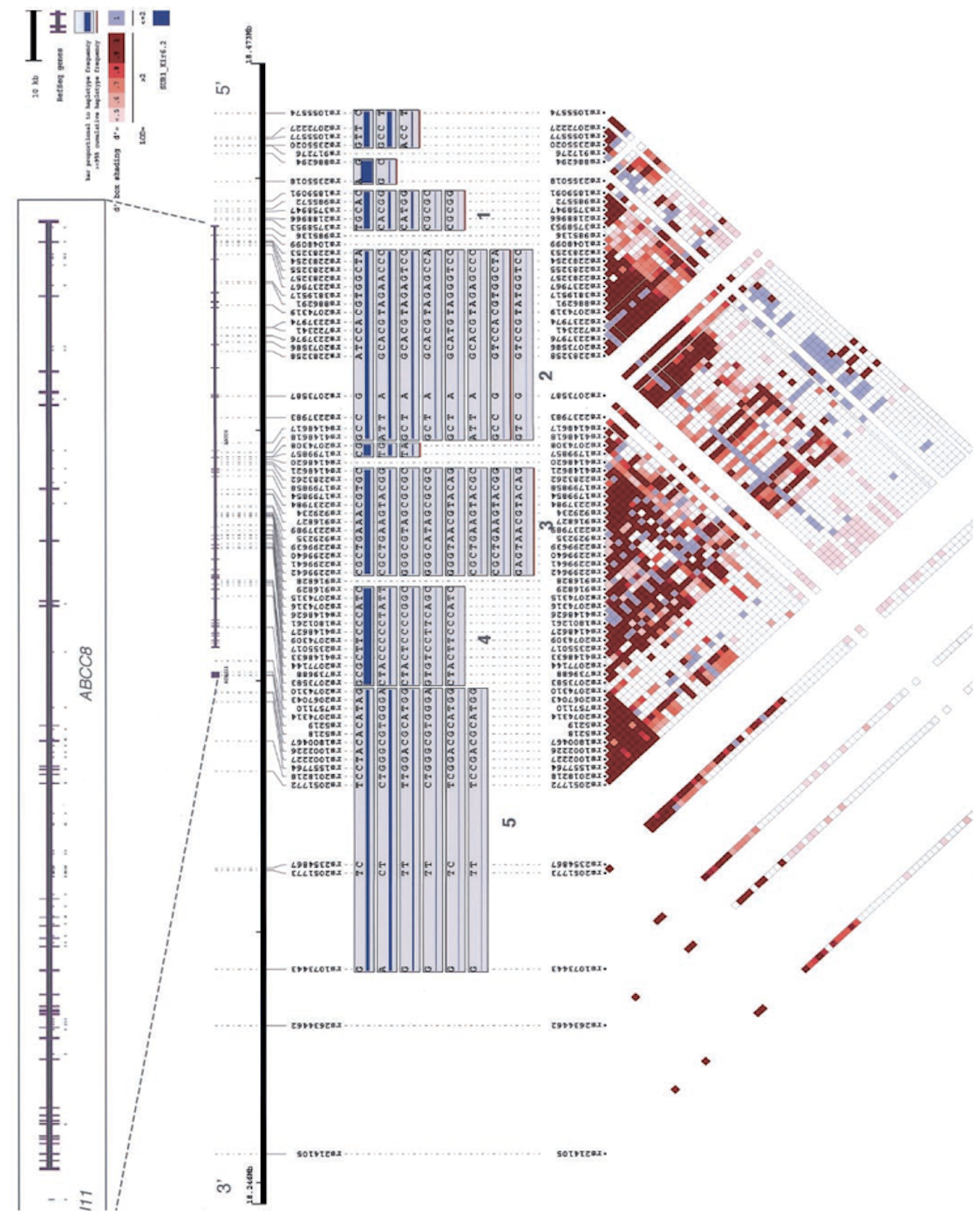Haplotype structure and genotype-phenotype correlations of the sulfonylurea receptor (SUR1) and the islet ATP-sensitive potassium channel (Kir6.2) gene region

The genes for the sulfonylurea receptor (SUR1; encoded by ABCC8) and its associated islet ATP-sensitive potassium channel (Kir6.2; encoded by KCNJ11) are adjacent to one another on human chromosome 11. Multiple studies have reported association of the E23K variant of Kir6.2 with risk of type 2 diabetes. Whether and how E23K itself-or other variant(s) in either of these two closely linked genes-influences type 2 diabetes remains to be fully determined. To better understand genotype-phenotype correlation at this important candidate gene locus, we 1) characterized haplotype structures across the gene region by typing 77 working, high-frequency markers spanning 207 kb and both genes; 2) performed association studies of E23K and nearby markers in >3,400 patients (type 2 diabetes and control) not previously reported in the literature; and 3) analyzed the resulting data for measures of insulin secretion. These data independently replicate the association of E23K with type 2 diabetes with an odds ratio (OR) in the new data of 1.17 (P = 0.003) as compared with an OR of 1.14 provided by meta-analysis of previously published, nonoverlapping data (P = 0.0002). We find that the E23K variant in Kir6.2 demonstrates very strong allelic association with a coding variant (A1369S) in the neighboring SUR1 gene (r(2) > 0.9) across a range of population samples, making it difficult to distinguish which gene and polymorphism in this region are most likely responsible for the reported association. We show that E23K is also associated with decreased insulin secretion in glucose-tolerant control subjects, supporting a mechanism whereby beta-cell dysfunction contributes to the common form of type 2 diabetes. Like peroxisome proliferator-activated receptor gamma, the SUR1/Kir6.2 gene region both contributes to the inherited risk of type 2 diabetes and encodes proteins that are targets for hypoglycemic medications, providing an intriguing link between the underlying mechanism of disease and validated targets for pharmacological treatment.
Florez_E23K_Diabetes.pdf



